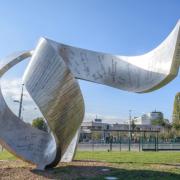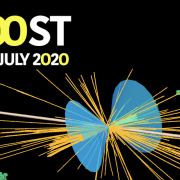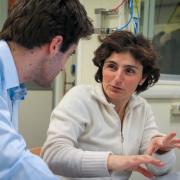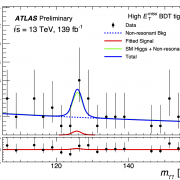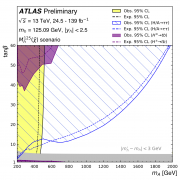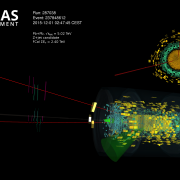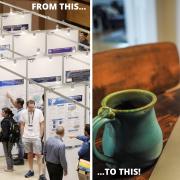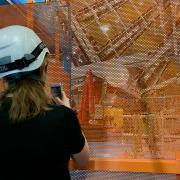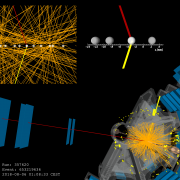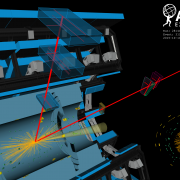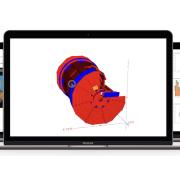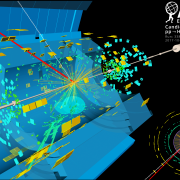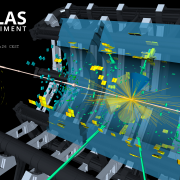Access to Collaboration Site and Physics Results
Updates tagged: “HION group”
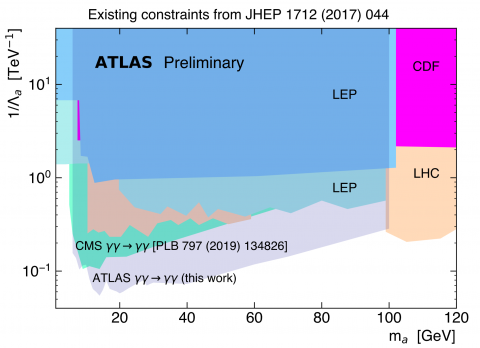
ATLAS measures light scattering on light and constrains axion-like particles
Light-by-light scattering is a very rare phenomenon in which two photons – particles of light – interact, producing another pair of photons. Direct observation of this process at high energy had proven elusive for decades, until it was first seen by the ATLAS Collaboration in 2016 and established in 2019. In a new measurement, ATLAS physicists are using light-by-light scattering to search for a hyped phenomenon beyond the Standard Model of particle physics: axion-like particles.

ATLAS probes the quark-gluon plasma in a new study of photo-produced muon pairs
The electromagnetic fields of the Lorentz-contracted lead nuclei in heavy-ion collisions at the LHC act as intense sources of high-energy photons, or particles of light. This environment allows physicists to study photon-induced scattering processes, that can not be studied elsewhere. A key process examined by ATLAS physicists involves the annihilation of photons into pairs of oppositely charged muons. The ATLAS Collaboration recently released a new, comprehensive measurement of this process.

ATLAS observes light scattering off light
Light-by-light scattering is a very rare phenomenon in which two photons – particles of light – interact, producing again a pair of photons. The ATLAS Collaboration has reported the observation of light-by-light scattering with a significance beyond 8 standard deviations.

Noble collisions give new insights on heavy ion systems
In October 2017, the ATLAS experiment recorded collisions of xenon nuclei for the first time. While massive compared to a proton, xenon nuclei are smaller than the lead ions typically collided in the LHC. The xenon-xenon collision data, combined with previous results from the analysis of lead-lead collisions, provide the first opportunity to examine heavy ion collisions in a system that is distinctly smaller in size. This allows physicists to study in detail the role of the collision geometry for observables often associated with the quark-gluon plasma.
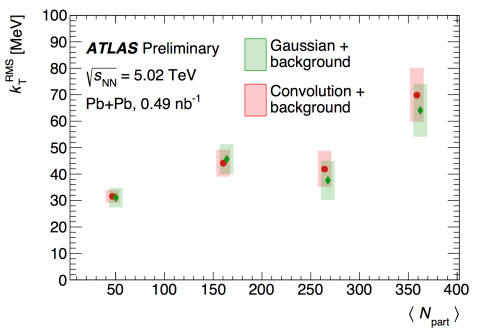
ATLAS studies the quark-gluon plasma using muon pairs produced by two photons
Heavy ion collisions at the Large Hadron Collider (LHC) form a hot, dense medium called the quark-gluon plasma (QGP), in which the primary constituents are thought to be quarks and gluons produced in the initial interactions of the nuclei. Besides typical heavy ion collisions, where the nucleons in the colliding nuclei undergo multiple strong interactions with each other, there is also a class of “ultraperipheral” collisions. In these collisions, the nuclei are far enough apart to miss each other, but the surrounding electromagnetic field of one nucleus is able to interact both with the other nucleus (“photonuclear” interactions) and with the other electromagnetic field (“photon-photon” interactions).
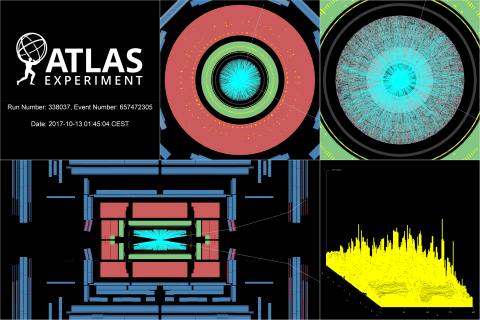
Noble nuclei open new doors in ATLAS physics
Take something you think you understand, change it and see what happens. Earlier this month, the ATLAS Experiment put this basic scientific principle to the test during the first Large Hadron Collider (LHC) xenon run.

Photon-tagged jet quenching in the quark-gluon plasma
Collisions of lead nuclei in the LHC form the hot, dense medium known as the quark-gluon plasma (QGP). Experimentally, the QGP is characterized by the collective flow of emerging quarks and gluons. They fragment into highly collimated “jets” of particles that in turn lose energy through a phenomenon known as “jet quenching”. Studying this effect can help improve our understanding of quantum chromodynamics, the theory of the strong nuclear interaction that governs the behaviour of the QGP.
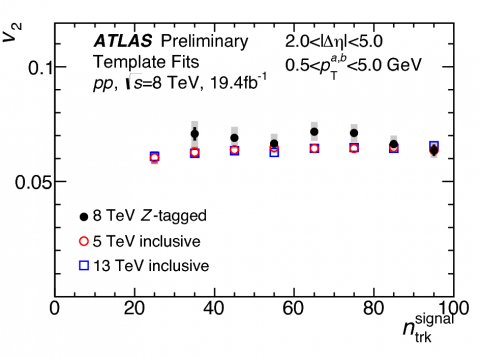
Finding a haystack in a field of haystacks
In order to produce rare physics phenomena, such as the Higgs boson or possible signs of new physics, the Large Hadron Collider (LHC) collides tens of millions of protons per second. Under such conditions, around 20 simultaneous proton-proton interactions occur in each beam crossing. Thus, additional collisions called “pile-up” are recorded along with the collision of interest. Together, they form a single event for analysis.
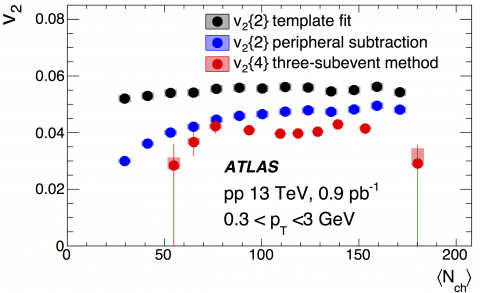
Exploring the nature of the “ridge” in small systems
When ultra-relativistic heavy ions collide, a new state of hot and dense matter – the quark–gluon plasma (QGP) – is created. One of the key features for this state is the observation of long-range azimuthal angle correlations between particles emitted over a wide range of pseudorapidity. This phenomenon is often referred to as the “ridge”.
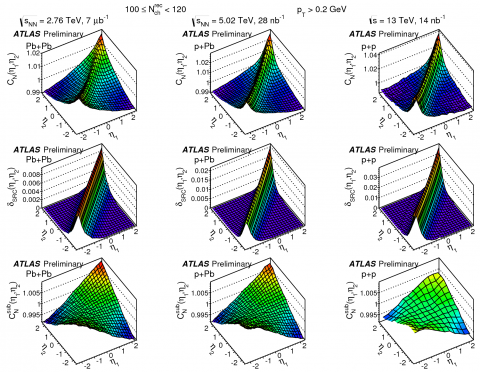
New ATLAS results presented at Quark Matter 2015
Heavy-ion physics is the study of the hot dense medium created shortly after the Big Bang. Physicists examine this medium in three collision systems: lead-lead, proton-lead and proton-proton collisions.


